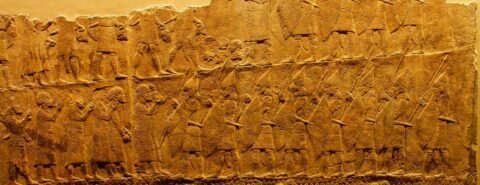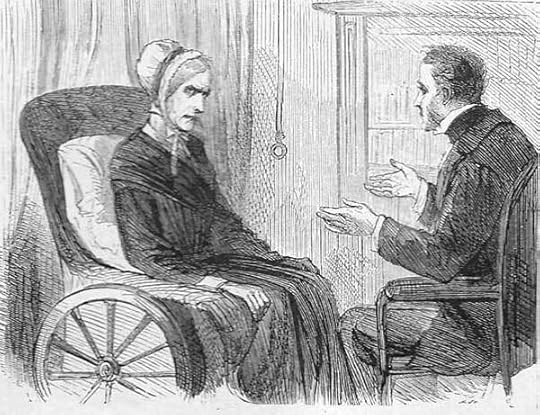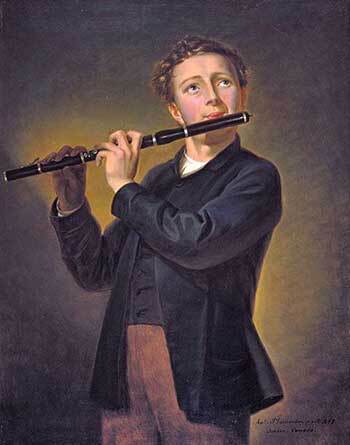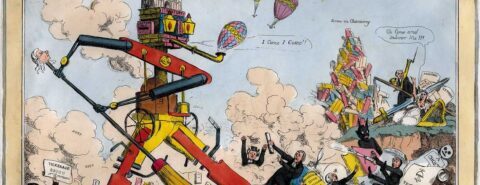Oxford University Press's Blog, page 46
August 15, 2023
Putting positive planning into telemedicine projects

Putting positive planning into telemedicine projects
A new implementation tool helps practitioners design and build better bespoke remote healthcare programmes.While the face-to-face consultation will never be replaced, online and phone-based healthcare is here to stay—even more so after the global COVID-19 pandemic that catalysed remote diagnosis. But designing successful telemedicine projects is notoriously complex with most initiatives failing during the founding stages.
In an article in the journal Oxford Open Digital Health, Neha Verma and colleagues present a new easy-to-use chart-based checklist tool—Telemedicine Program Design Canvas (TPDC)—that brings clarity and a logical checklist approach to the process.
The TPDC allows doctors and healthcare workers to construct a programme that identifies strengths and likely pitfalls that can be adapted to suit patients and the wider community. To make sure it could be used in a variety of settings, the tool was developed over six mammoth 16- to 20-hour workshops, using healthcare stakeholders from three government organisations and three non-profit organisations.
From the sessions, the researchers identified 14 key elements that need to be addressed when designing a new programme: the problem, ecosystem, patients, patient journey, patient engagement and trust, providers, provider training, provider engagement, channels, technology, medicines and diagnostics, desired outcomes, and costs and revenues.
Process for the peopleThese 14 elements can then be grouped to guide conversations about implementation. For example, consider the problem and the ecosystem together. Is the community mainly urban or rural? In many low- and middle-income countries, rural phone and internet access may be limited so provision would need to be made to enable patients to participate in the programme.
Next comes the patients, patient journey, and patient engagement and trust: what particular strengths can be drawn on and what have patients been saying about their needs or previous programmes?
After patients, consider the providers: are they specialists or generalists, and what can be done in terms of provider training and engagement?
“The TPDC allows doctors and healthcare workers to construct a programme that can be adapted to suit patients and the community.”
With the patient and provider relationship examined, the TPDC looks to the medium and channels of communication. Which modes are most appropriate: web, apps, chat bots, or video? And how is the core technology in terms of software and hardware going to work reliably?
Finally, the tool looks at how tech and provider combine to deliver the diagnostics and treatments offered to patients. It also considers the desired outcomes because clear goal setting orientates the entire telehealth project. The very last step is to balance outcomes and treatment against overall costs and revenues.
Putting the process into practiceThe authors tested the new tool in two projects in rural India. The Visilant project used the TPDC tool to help achieve its aim to increase eye care to vulnerable populations through teleophthalmology. The MyTeleDoc project used the tool to help with its work connecting community health officers in government-run rural primary care clinics with specialists at secondary and tertiary health facilities.
The TPDC tool enabled each project to focus on their strengths and identify weaknesses, resulting in a more formulaic and less ad hoc approach to planning.
While the process is far from finished this is not the end of the conversation, as the article authors note. Many more projects will be needed to evaluate the efficacy of this approach.
However, with such a high failure rate for current remote healthcare projects there is a bridge to build between design and implementation of telehealth interventions, particularly for low and middle-income countries where people lack immediate access to onsite healthcare facilities. Providing a robust framework for the holistic design of such interventions, the TPDC is well-placed to help bridge this gap, enabling better comprehensive and iterative remote healthcare programme planning.
For more from Oxford Open Digital Health, check out our selection of scicomms content supporting our journal authors in spreading the word about their research.
Featured image by Karolina Grabowska (public domain)
August 14, 2023
International law in quest for justice

International law in quest for justice
One of the stated purposes of the United Nations, according to the UN Charter, is to settle international disputes or adjust situations that threaten international peace “in conformity with the principles of justice and international law.” The Preamble to the Charter refers to the need “to establish conditions under which justice and respect for the obligations arising from treaties and other sources of international law can be maintained.” Yet, are justice and international law two different animals and can international law aspire to exist without justice?
A choice between law and justice?In The Law of the United Nations, Hans Kelsen observed that the announcement of the dual respect for justice and international law is problematic: either “justice” and “international law” are the same, making one of them redundant, or they are distinct concepts. If they are indeed distinct, which seems more plausible, there can be situations in which the two contradict each other. The organs of the United Nations called upon to apply these provisions, and in particular the International Court of Justice (ICJ), as the United Nations’ “principal judicial organ,” may face a dilemma between prioritizing international law or justice, which, for Kelsen, undermines adherence to international law. The Court is required by its Statute to decide disputes “in accordance with international law” but the Statute is agnostic about “justice.” Does this then mean that the Court has to consistently prioritize the application of international law over justice?
“To assume that international law can be applied at the expense of justice is a contradiction in terms.”
Passing over the vexed semantics of “justice” in a heterogeneous multicultural legal system, to assume that international law can be applied at the expense of justice is a contradiction in terms. “Justice” is one of the objectives of the international legal order. The UN Charter raises justice to the same level as peace and security, when it makes provision for dispute settlement that does not endanger “international peace and security, and justice.” If the ability of international law to do justice is often questioned, its duty to do so rarely is. International law cannot be separated from the obligation to do justice. If it does not do justice, how, in the long run, do we hope to keep a functioning international legal order? The dilemma between prioritizing international law or justice is therefore moot—the ICJ applies international law to do justice.
The role of equityAt this juncture, a practical question arises: how can the adjudicator apply international law to do justice, if in a concrete case law and justice appear to oppose each other? International law offers the necessary tools to reach a just resolution of a dispute. Equity—that is, the legal concept of equity, as opposed to its extra-legal siblings (philosophical, theological, etc.)—is a crucial part of this equation. Its very purpose is to do justice. In the words of Umpire Plumley in the 1903 Aroa Mines case, “[t]he way is equity, the end is justice.” Justice is the rationale and the ethical foundation of equity. Equity is the link that tethers international law to justice.
A legal concept of long pedigree, equity is constantly incorporated into the international legal system and is applied qua international law. Protean and chameleon-like, equity is, among others, the Aristotelian corrective that requires the adjudicator to be mindful of the circumstances of the particular case or to soften the harshness of strict law to do justice. Equity is present in the reasoning of international courts and tribunals not only when called by its proper name but also when cloaked under its aliases and variations: good faith, reasonableness, unjust enrichment, estoppel, acquiescence, and the clean hands doctrine—to name but a few. Human rights too originate in equity.
“Justice is the rationale and the ethical foundation of equity. Equity is the link that tethers international law to justice.”
The international legal system is infused with equity for an additional reason: the equitable innovations of the past have tended to become today’s hard law. For example, several equitable Roman remedies are part of contemporary international law. The ability of present-day international courts and tribunals to issue provisional measures reflects the equitable Roman remedy of the interdict (akin to the English Chancery’s injunction). Another Roman equitable remedy, restitutio in integrum, is part of today’s law of state responsibility. Roman equity was at the root of English equity, while the later Roman codifications subsumed praetorian equity and inspired the civil law systems.
When an international court or tribunal applies contemporary international law that incorporates equity, say it orders provisional measures, it no longer needs to rely on equity but rather on the specific provision of its statute or procedural rules authorising it to do so. Equity is present in the legal rule, but the adjudicator does not rely directly upon it. Equity’s transformation into hard law makes it lose flexibility, and this loss is compensated by new equity that will probably become tomorrow’s hard law.
We can agree that international law is an imperfect system—in many ways it is flawed. Yet, imperfect and flawed as it may be, it still needs to aspire to justice. In dispute settlement, international law has the potential to fulfil an important task and do justice. Equity is key to unlocking this potential for justice and should not be met with fear, but rather embraced.
Featured image: Luca Dugaro via Unsplash (public domain)
August 12, 2023
The rise of dairy consumption [infographic]

The rise of dairy consumption [infographic]
Domestication of livestock in different regions of the world occurred as a gradual process starting 9,000 to 10,000 years ago. As trade routes were established, dairy animals became widely available in areas of the planet capable of sustaining herds, thus dairy products became important components of dietary and cultural diversity within global populations.
Lactase, the enzyme that facilitates digestion of lactose in breastmilk and other milks, is produced during infancy in mammals. While lactose is a sugar that provides energy for infants, most adults have lost the ability to digest lactose, leaving them lactose intolerant. However, in some populations, adults have maintained expression of lactase. This lactase persistence is associated with single nucleotide polymorphisms (SNPs)—in other words, replacements of a single nucleotide in the DNA sequence—near the gene that encodes for lactase. Specific global populations have different variants of SNPs, suggesting that adaptive responses to increased dietary dairy occurred independently following the adoption of agriculture in different regions and populations. Generally, lactase persistence occurred more frequently in northern latitudes, higher altitudes, or regions subject to periodic droughts—regions where non-dairy food sources may be impacted yearly or seasonally by the environment.
What are the consequences of extending milk consumption beyond infancy?In the infant, milk provides a superfood that has high caloric content, transfers proteins and other nutrients from mothers to offspring, and assists with establishing the offspring’s microbiome. Beyond calories, dairy intake may have accelerated development, increased growth, and enabled earlier reproduction and wider birth canals in early humans. The availability of dairy therefore afforded better chances at individual and species survival.
Populations that maintained the ability to digest lactose had improved infant and adolescent growth, and better later-life health outcomes. Further, populations in areas with shorter growing seasons (and therefore limited ability to rely on plant-based foods) but with availability of dairy products were able to maintain body size. Contemporary populations also demonstrate a general correlation between increased average height and lactase absorption and dairy consumption in adults, suggestive of association between the two.
Evolution of genes that promote lactase persistence in different regions of the world but with similar timing suggests that milk played an important role culturally and nutritionally in regions where agricultural crops were difficult to establish or susceptible to environmental fluctuations. The persistence of lactase enables digestion of milk lactose throughout the lifespan allowing milk to provide an important dietary component, especially in areas with food insecurity.

This blog post is based on the article “Dairying and the evolution and consequences of lactase persistence in humans,” written by Jay Stock.
August 10, 2023
Is all fair in war? Innocent blood, armed conflict, and King David

Is all fair in war? Innocent blood, armed conflict, and King David
While the terrible events in Ukraine have reminded Europeans that bloodshed is an inevitable consequence of war, it is widely agreed that even in war, innocent blood should not be shed. Historically speaking, the modern notion of “non-combatant immunity” has its origins in the “Peace of God”—referred to first in statements issued by medieval French church councils in the tenth century to grant immunity from legitimate military attack to various classes of the Christian population. What has not been readily apparent until now is that in the Judeo-Christian tradition, the problem of innocent bloodshed in war was first detected and, indeed, dissected much earlier—in its most ancient text, the Hebrew Bible/Old Testament.
David the WarriorThat this concern with illegitimate killing in war has remained largely undetected until now may be explained by the fact that it is found not in texts explicitly concerned with jus in bello, or the right conduct of war (e.g. the laws in Deuteronomy 20 or the prophetic oracles of Amos 1-2). Instead, this concern is to be found in the books of Samuel and 1 Kings in the stories about David, a man who is arguably remembered more for shedding blood than sparing it.
Indeed, in the first book of Samuel, the very first words David utters after hearing about Goliath are: “What will be done for the man who kills this Philistine and removes the reproach from Israel?” (1 Sam 17:26). Moreover, after famously dispatching the Philistine talisman with his sling, David becomes so prolific in war that the women praise David for slaying ten times more Philistines than King Saul himself. Thus, it is hardly surprising when war serves as the backdrop for not only David’s ascent to the throne but also his reign, as David’s forces defeat the House of Saul, the armies of the neighbouring nations, and then finally those of his rebellious son, Absalom.
Better spare SaulInterestingly, it is precisely this prevalence of armed conflict in the stories of David which allows the problem of illegitimate bloodshed in armed conflict to be explored. The awareness of this problem may be seen in the detailed stories of David’s resolute refusal to shed the blood of Saul (1 Sam 24 and 26).
While Saul seeks to kill David, and David has already been appointed his successor, David will not kill Saul because Saul is still the divinely appointed king. This insistence is underlined when David interrogates an Amalekite who subsequently claims to have killed Saul, apparently for David’s benefit. However, because he has done so in cold blood, rather than in the heat of combat, the Amalekite is executed by David, who invokes Saul’s illegitimately shed blood on the man’s head. Indeed, throughout the rest of David’s rise to the throne, the reader sees David heeding warnings of the problem of innocent blood, by killing and cursing those whom he judges to have shed it.
Collateral damageIronically, no sooner has David secured the throne, when the problem of innocent blood precipitates the first of a series of crises in his own royal house. The most infamous of these sees David sleep with Bathsheba, the wife of Uriah, one of his soldiers, who is in the field fighting the Ammonites under David’s general Joab. When David is informed that Bathsheba is pregnant with his child, he recalls Uriah to the capital, but fails to persuade the innocent Uriah to sleep with his wife. Unable to cover his tracks, David sends Uriah back to the front with his own death warrant, instructing his commander, Joab, to place Uriah where the fighting is most fierce to ensure he is killed. When the divine judgment is delivered to David by the prophet Nathan, it is clear that the problem is not just that David has killed the innocent Uriah for his own benefit, but that David has done so with the “sword of the Ammonites.”
The irony is compounded by the fact that earlier Saul had sought to do something similar to eliminate David, tempting him with the promise of marriage to his daughter, if David would lead a dangerous combat mission, with Saul hoping that his young rival would be slain by the “sword of the Philistines” in the process. Much later, David seems to have learned his lesson, successfully resisting the temptation to kill a kinsmen of Saul under the cover of David’s war against his own son Absalom, because the war was already won.
General carnageThe grim story of David’s succession by his son Solomon underlines the significance of the problem of innocent bloodshed in times of war. Here it is made clear to Solomon that David’s long-time general, Joab, must be executed for killing in cold blood, not one but two rival generals, Abner and Amasa, with whom David had made peace. In David’s own words, the problem was that Joab had in deceitfully killing both men, shed the “blood of war” in a time of peace. By heeding his father’s advice and executing Joab, Solomon affirms the risks both men understand innocent blood to pose if it is left unremedied. Indeed, Saul’s earlier recognition that David’s attentiveness to the problem of illegitimate blood has secured David’s kingdom for him is finally echoed by the narrator’s affirmation that Solomon’s kingdom has been secured similarly—a conclusion which underlines the centrality of the problem of innocent blood for David’s story as a whole.
Innocent blood in armed conflict: a wider problem?While the problem of innocent bloodshed is writ large across the stories about David, it is less clear why. One possibility is hinted at by traditions found in the later history of books like 2 Kings and in the prophetic literature of Jeremiah. These traditions attribute the catastrophic fall of Jerusalem and Judah and the exile of its people to Babylon to the royal shedding of innocent blood. Indeed, in this connection, it is perhaps telling that one of the final stories of the Davidic kingdom included in both Jeremiah and Kings recounts the brutal, deceitful, and cold-blooded slaughter of the governor Gedaliah and his allies by Ishmael, a royal descendant of David. This may suggest that those who believed that their nation was ultimately destroyed because of the shedding of innocent blood by David’s descendants, chose to highlight the origins of this problem in the stories of the rise, reign, and success of David himself. Sadly, recent hostilities in Ukraine and elsewhere suggest that innocent bloodshed in war has not been consigned to history but remains an enduring problem to this day.
Featured image by Mike Peel, CC-BY-SA-4.0 via Wikimedia Commons.
August 9, 2023
Irregular gleanings and a last shot at Modern English usage

Irregular gleanings and a last shot at Modern English usage
By definition, “The Oxford Etymologist” deals with the origin of words. Therefore, usage is discussed in it rarely and only in the context of language history. That history need not be ancient. Some phenomena emerged “the day before yesterday,” or as the famous historian Lord Thomas Babington Macaulay used to say, in the memory of the men (!) still living. Such is the case of the fillers like and you know. Professor Valerie Fridland, whose book Like, Literally, Dude: Arguing for the Good in Bad English was at the center of the latest two posts, did not participate in the discussion, but quite a few people provided their comments, and I would like to respond to them.
There can be no doubt that like and you know have a phatic function. He is a fool, you know is not quite the same as he is a fool. Arthur Clennam wanders from one Barnacle to another in the Circumlocution Office (Little Dorrit) and tries to find out the truth about Mr Dorrit’s imprisonment. The gentlemen are less than helpful, and one of them says to his colleague (another Barnacle): “He wants to know, you know.” This is funny. As long as like was a relatively rare hesitation phenomenon (“I… like… felt lost among so many new faces”), we understood the message. Granted, one need not speak and should not speak by the book. Oral speech has a style and a charm of its own. But I refuse to see the charm in what I overheard the other day: “We, like, went, to the store, and I, like, asked the manager how much it will cost. He said…”
 Arthur Clemmon. He wanted to know, you know.
Arthur Clemmon. He wanted to know, you know.(The Diamond Edition of Dickens’s Little Dorrit. Scanned image and text by Philip V. Allingham via victorianweb.org. Public domain.)
The use of like has become a disease, a symptom of a lazy, undisciplined mind, and the epidemic of like is nothing to be happy about. It reminds one of medieval epidemics: someone would begin to dance, a neighbor would follow suit, and soon the entire village would dance itself to death. Coughing in a concert hall and a paroxysm of laughter described by Victor Hugo in L’homme qui rit belong to this category. Uninhibited speech need not resemble a flow of verbal sewage. One of our correspondents mentioned the use of so at the beginning of each sentence. It is the same sewage ~ “so-age” (most puns are feeble, aren’t they?).
The overuse of emphatic adverbs is also “phatic.” The speaker appears to be constantly ill at ease. Hence the free flow of very. As a result of this inflation, very loses its meaning. If everything is very interesting, very clever, and very, very beautiful, overstatement becomes the norm, and its message is lost. Adverbs like actually, definitely, and certainly have also become fluff. It is actually the best book I have ever read: strong but no longer impressive. Enough has been said about the horror of buzzwords. To repeat: oral speech need not consist of well-thought out, “bookish” statements. The charm of oral communication consists precisely in its unpremeditated character, in its spontaneity. But useless epithets and adverbs are ballast, a sign of vacuous speech. Does this phenomenon have a history? Yes. Is it endowed with a function? Yes, indeed. Is it common? Oh, yes. But so is dirt. Stay away.
Popular usage tends to triumph in the end, and “wrong” or questionable forms become the norm. One of our correspondents mentioned a few “language peeves” that have been discussed again and again. Are things centered on or around something? Only center on makes sense, but center around has been used for so many years that the fight is lost. Talking around (rather than about) an issue no longer sounds wrong. It reminds one of beating about the bush and means talking about something again and again without coming to a definite conclusion. Try and instead of try to. Whatever the impulse behind try and before an infinitive, this construction has been around for about five centuries, and attempts to eradicate it are doomed to failure. The realtors only sold three houses last month. Indeed, the sentence is slipshod: only would be more in place before three. But only often occurs before verbs. Consider: “I only wanted to say something.” The next step is to “We only sold three houses.” Perhaps a bit clumsy but understandable.
 Actually, dancing themselves to death.
Actually, dancing themselves to death.(“Imago Mortis” via Picryl, public domain)
Some of the most famous examples of competing forms are sneaked versus snuck, dove against dived and pled again pleaded. They will remain as variants in American English for some more time, and in the future (or so it seems), one of them may triumph over its competitor. The popularity of snuck, dove, and pled (on the analogy of stuck, strove and bled?) is a curious case of the victory of irregular forms. In American usage, I cannot help saying it coexists with I cannot help but say it. No one can predict how long this state of unsteady equilibrium will persist.
A different case is the confusion or clash of similar words, the emergence of nonsense words like irregardless, and the eternal surprise at the fact that flammable and inflammable are close synonyms. The misuse of beg the question is famous. Those who do not know that the phrase is a translation of the Latin formula petitio principii understand beg as “ask.” Similar and deceptively similar forms are destined to get into each other’s way. Such are acuity and acuteness. They are indeed synonyms, but acuity (as applied to thought, hearing, and vision) is rather bookish and should be used with care. Genealogy is invariably pronounced in America as geneololgy, obviously, under the influence of geology, psychology, and the rest. (How is it in British English?) I am so much afraid of using the correct form in my lectures that always say “genealogical information.” Along similar lines, I also have a strong dislike for zoology, with the first syllable pronounced like the word zoo, but here I am not alone in my dislike. A curious case is fulsome. It did at one time mean “full of something” but narrowed its meaning and now seems to be used only in connection with fulsome flattery. It can no longer be made to mean “complete.”
Returning to like in a different context: as I said versus like I said. Like I said, like I did it, and so forth were and are extremely common non-standard forms in British English. They were taken to America and never acquired the stigma of vulgarisms there. One can be taught not to use the phrase like I said, but it will prevail anyway (incidentally, I wince at anyways.) Let us agree that like I said is correct in America, along with gotten and many other forms no longer accepted in King’s English. My special peeve is the grammar in sentences like “the problem of connections remain unsolved.” This grammar is ubiquitous in American English. Finally, I wanted to thank our correspondent who told me about the dual pronouns in the Carinthian dialect. I knew about it from books (because I teach a course “German Dialects”), but hearing such things from native speakers is much more inspiring than seeing a mention of them in a book like Deutsche Mundarten.
 A kukri and kukuruz have nothing in common.
A kukri and kukuruz have nothing in common.(L: Brigade of Gurkhas, via Picryl, public domain. R: Corn farmer, via Pxfuel, public domain)
This brings me to the end of the comments and questions inspired by the latest two posts. One query has nothing to do with usage. Our reader knows the Slavic word kukuruz(a) for “maize/corn” and wonders whether it has anything to do with kukri, the national weapon of Nepal. There is no connections at all. The Slavic word is usually supposed to be of Turkish origin, but this etymology is not quite certain.
Conclusion. Culture is a vulnerable commodity. It perishes unless it is taken care of. There is no need to be a retrograde but no virtue in defending, promoting, and celebrating every piece of popular trash. Language, in addition to being a means of communication, is an integral part of culture.
Featured image via Wallpaper Flare (public domain)
August 6, 2023
In praise of phrases

Writers need to love words—the good, the bad, and the irregular. And they need to respect syntax, the patterns that give words their form. But when writers understand the power of phrases, their sentences shine.
Phrases are bigger units than words, but smaller than sentences and clauses. You can describe them by form (noun phrase, prepositional phrase, etc.) or by function (appositive, contrastive, modifying, and so on). Regardless of what you call them, they allow writers to employ rhetorical strategies that help sentences flow and cohere.
Let’s look at some examples. Here is John McPhee writing about his research on oranges:
In Polk County, at Lake Alfred, though, I happened into the University of Florida’s Citrus Experiment Station, five buildings isolated within vast surrounding groves. Several dozen people in those buildings had Ph.D.s in oranges, and there was a citrus library of a hundred thousand titles—scientific papers, mainly, and doctoral dissertations, and six thousand books. Then and there, my project magnified.
There is much to admire in that snippet from his New Yorker piece on “Omission”: the casualness of happening into the Experiment Station. The whimsy of people with Ph.D.’s in oranges. The pacing of Then and there in the final short sentence.
Notice how the phrases work: the in and at propositional phrases in the first sentence set the scene geographically; the appositive noun phrase at the end—five buildings isolated within vast surrounding groves—paints a bird’s-eye picture. You are there.
In the second sentence, the phrase in those buildings situates the several dozen people: it simultaneously ties the sentence back to the earlier mention of buildings and provides a pause before getting to the whimsical Ph.D.s. The appositive noun phrase after the word titles builds out the details, with the dash providing the necessary emphasis to the size of the collection. It’s great writing.
Examples abound. Here is Margalit Fox, writing about World War I:
A barren, dusty patch of desert near the river, Shumran was the staging area for the journeys into captivity–to a half dozen prisoner-of-war camps across Turkey for the officers, to labor camps for the rank and file. At Shumran, they were at last given something to eat: a pile of the hardtack known among Britons as Turkish army biscuits, dumped in a heap in the dust.
Fox starts with an appositive phrase describing Shumran, putting the dusty barrenness in your mouth at the outset. She ends that first sentence with a compound prepositional phrase explaining what captivity entailed depending on one’s rank. Her second sentence uses a prepositional phrase (At Shumran) to reiterate the setting, an appositive to characterize the meal (a pile of hardtack), and a couple of participle phrases (known among Britons as Turkish army biscuits and dumped in a heap in the dust) to build out the historical and visual detail.
Of course, you can’t just drop phrases anywhere. Imagine if Margalit Fox had begun her paragraph with the appositive after the subject instead of before it. That choice yields a much different rhythm: Shumran, a barren, dusty patch of desert near the river, was the staging area for the journeys into captivity. The emphasis is on the name rather than the description, and the dusty appositive between the subject and predicate chokes flow of the sentence.
Or suppose that John McPhee has ended his first sentence with the prepositional phrase. That would give the sentence a trudging pace: I happened into the University of Florida’s Citrus Experiment Station, five buildings isolated within vast surrounding groves, in Polk County, at Lake Alfred. By the time you get to Polk County, you’ve already read the focal point of the sentence and the prepositional phrases just grind things to a halt.
I’d invite you to find and analyze examples from writers you admire. Reflect on the way that writers build cohesion and rhythm out of grammatical units bigger than words. Once you begin thinking about appositives, prepositional phrases, participle phrases, and the like, you will look at sentences in a whole new way.
Featured image by Nathaniel Shuman via Unsplash (public domain)
August 3, 2023
End birth alerts that separate at-risk Indigenous mothers from their children

End birth alerts that separate at-risk Indigenous mothers from their children
Born Innocent uncovers the ongoing legacy of state-mandated family separation on Indigenous and other minority communities, with a particular focus on women and children.
To overcome the intergenerational legacy of state-mandated family separations beginning with the residential and boarding school policies of settler states, governments must give Indigenous communities more autonomy to manage their own child welfare policies. An encouraging development involves the end of the practice of “birth alerts” in most Canadian provinces that allowed hospitals and social services to flag expectant mothers deemed to be high-risk, to seize their babies upon delivery. The prospect of “birth alerts” and hospital baby seizures are devastating for any new mother. Conscious of the prospect that their baby might be taken from them, at-risk Indigenous, racialized, and disabled expecting mothers avoid prenatal care or social programs that might otherwise improve their pregnancy and birth outcomes.
Non-Indigenous social welfare agencies continue to disproportionately target Indigenous pregnant women for “birth interventions,” furthering the cycle and legacy of state-mandated Indigenous family separation. Ending birth alerts was a top priority in Canada’s National Inquiry into Missing and Murdered Indigenous Women and Girls. The report detailed how Indigenous women are more likely to have their babies seized by child welfare authorities under the birth alert system simply because they were once in the child welfare system themselves.
“Non-Indigenous social welfare agencies continue to disproportionately target Indigenous pregnant women for ‘birth interventions’.”
Among Canadian provinces, Québec is a holdout in its ongoing use of birth alerts, making the province the subject of a class action suit on behalf of Indigenous mothers whose children were taken away from them at birth. Indigenous advocates in one rural Québec region (Abitibi-Témiscamingue) reported that 30% of child welfare interventions in the past two years involved Indigenous families, who make up only 4% of the region’s population. There, the Femmes Autochtones du Québec advocacy group led a pressure campaign to end the practice since it dissuades expecting Indigenous mothers from going to the hospital for preventive care during their pregnancies.
Despite the official end to the practice of birth alerts in Canada, Indigenous babies continue to be separated from their mothers in First Nations communities in Northern Ontario communities All jurisdictions must follow through with their commitments to end birth alerts. Mothers targeted because of their poverty, experiences of domestic violence, or past involvement in the child welfare system are victims themselves who need support from social workers. Indigenous communities need more resources to provide support to their members and to protect mothers and children from abusive situations.
Similar child welfare interventions target disadvantaged minority women in other jurisdictions, including the United States, where Black women are the main target for birth removals. There, Black mothers face child custody removals at rates up to 10 times those of white mothers, for many of the same reasons that lead to birth alerts among Indigenous Canadian women, including poverty, addiction, and insecure housing. Black mothers often face custody removals because of their precarious economic circumstances, creating a set of conditions that make it difficult for them to ever attain the degree of self-sufficiency required by child welfare authorities to regain custody of their children.
“Birth alerts are examples of preventive justice actions that penalize and condemn women for seeking medical assistance.”
Birth alerts are examples of preventive justice actions that penalize and condemn women for seeking medical assistance. Their at-risk situation is not an individual character failing that merits condemnation and enforcement, but a medical condition or structural issue best addressed through treatment and social support. While the end to birth alerts in some Canadian jurisdictions is an encouraging first step, what is needed—across all jurisdictions—are child welfare policies that emphasize support and rehabilitation for expecting mothers and their families, rather than policies that punish disadvantaged mothers for challenges they cannot overcome on their own.
New parents experience birth alerts and baby seizures as forms of punishment that undermines the bond between infants and their mothers at a crucial stage in their development by depriving them of their mother’s care, nursing, and bonding. Instead of issuing birth alerts resulting in baby seizures, child welfare agencies should reach out to at-risk expecting mothers with help to treat addictions, provide support, and find housing before and after they give birth. Expecting mothers need to know that social service agencies will not punish them with child removal at birth when they reach out to seek treatment and other forms of social assistance.
Featured image from Unsplash (public domain)
August 2, 2023
An etymological cul-de-sac: the verbs “flaunt” and “flout”

An etymological cul-de-sac: the verbs “flaunt” and “flout”
If anyone is interested, this post is number 900. I very much hope to reach Post 1001 and (perhaps) stop. The blog “The Oxford Etymologist” was born on 1 March 2006, and surprisingly, after 17 years of existence, it has not solved all the problems of word origins. It has even increased the confusion by explaining why the origin of such and such a word is and will probably remain unknown for all eternity. I am celebrating the blog’s dubious “anniversary” by rubbing in my discomforting message.
Here is the verb flaunt “to display ostentatiously,” that is, “to show off.” It surfaced in English in the middle of the sixteenth century. Shakespeare once used the noun flaunts “finery,” but the verb seems to have been known very little, because even our seventeenth-century etymologists did not mention it. Flout, an evil shadow of flaunt, which means “to treat with contemptuous disregard,” appeared at approximately the same time. We flaunt what we possess and admire (wealth, status, and so forth) and flout what we in our arrogance choose to ignore (the ban, a rule, a law). Both verbs sound somewhat alike and suggest ostentation and challenge, and that is why they are sometimes confused.
Flout has been explained rather well. By contrast, flaunt is a verb “of unknown origin.” The main problem is that so many fl– verbs and adjectives are either sound-symbolic or sound-imitative. I discussed the verb flatter in my Analytic Dictionary of English Etymology and in Word Origins… and am thus on familiar ground, but each word has a history of its own, and reference to some general principle does not go far enough. We can wander from flews “the chaps of a hound” to floosy and face countless riddles.
 What does Wulfila have to do with William? Only genius and the letter W.
What does Wulfila have to do with William? Only genius and the letter W.(L: “Wulfila translating the Bible” by Willhelm Lindenschmit, via Wikimedia Commons, public domain. R: John Taylor portrait of William Shakespeare, via Wikimedia Commons, public domain.)
The history of etymological research may be amusing. Noah Webster wrote about flaunt: “Doubtless of Celtic origin.” He cited flounce “to jerk forward” and Scottish flaster, which means approximately the same as flounce. Let me repeat: beware of getting lost in the fl– thicket, among fluster, flurry, flutter, flounder, and their likes (see also the end of this post). And of course, doubtless is a prohibited word in etymology. Until 1890, the revisions of Webster’s dictionary cited Gothic flautan “to boast” as either the source or a cognate of flaunt. (One never knows what to do with the forms one is advised “to compare” with the word that interests us.) This is an amazing tour deforce. The Gothic Bible was written in the fourth century, while the English verb turned up more than a millennium later. What happened to it between the days of Bishop Wulfila in Moesia and of William Shakespeare in Elizabeth I’s Albion? Did it remain undiscovered all that time? Also, flautan lacks n in the middle (this is not a fatal obstacle, however). And to add insult to injury, flautan is said to be of unknown origin. The Gothic adjective flauts meant “vainglorious.” We are witnessing an early case of flaunt and flout being confused. As far as I can judge, Gothic flauts and flautan are as sound-symbolic as the English verbs that interest us. In addition to suggesting the idea of flying, flowing, fluttering, and so forth, fl-, it appears, could also refer to ostentation, things flaming, flowery, and flamboyant.
Walter W. Skeat cited a few Swedish and Danish fl-words and called flaunt a possible borrowing from Scandinavian. This is an unconvincing hypothesis. Whenever a borrowing is suggested, we should explain under what circumstances a word penetrated another language. To put it differently, we need to pinpoint the place and circumstances of the contact. Who were the Danes, so influential and admired, that the English imitated their speech in the seventeenth century? Or is it a remnant of the Viking raids that lay dormant in some northern dialects and finally made its way to London? This is not impossible, but the evidence is wanting. Hensleigh Wedgwood, the most prominent etymologist of the pre-Skeat era, mentioned Bavarian flandern, a variant of fladdern ~ flattern, and reconstructed the verb’s initial meaning as “to wave to and fro.” His examples return us to English flatter ~ flutter ~ flitter and confirm the idea that we are dealing with a group of words resembling one another but most probably, not connected genetically. All the recent dictionaries say: “Of unknown origin” (a sad turnaround, considering Webster’s doubtless). The verdict is probably too harsh. We understand the impulse that produced sound-symbolic verbs like flaunt, but the details of the process are beyond reconstruction. (“Origin unknown” suggests that more research may or will answer all questions, but will it? Hardly in this case.)
 This flutist is not trying to mock anyone.
This flutist is not trying to mock anyone.(“Le flûtiste” by Antoine Plamondon, via getarchive.net, public domain)
Our conclusion about the etymology of flaunt is partly borne out by the history of flout, defined as “mock” by John Minsheu, the author of our first etymological dictionary of English (1617). From early on, in the entry flout, dictionaries have also been citing similar verbs, including the by now familiar Gothic flautan and the little-remembered verb flite “to jeer; wrangle,” but never specified the role of the lookalikes. However, as already mentioned, listing several fl-verb side by side throws no light on their origin. Wedgwood almost discovered the crucial clue, but it was Skeat who was the first to see the light. He tentatively explained flout as a borrowing from French and compared the English verb with Dutch fluiten (or rather, Middle Dutch fluyten) “to play the flute,” which once had also the meaning “to mock, jeer.” Perhaps there is no need to look for a French intermediary. In the early modern period, English borrowed hundreds of words from Dutch. The verb flout must have been slang, known outside the Low Countries. To cite a semantic parallel, German pfeifen auf (Pfeife “pipe”) has a similar meaning, that is, “to jeer.”
I’ll skip the history of flute but by way of conclusion, cite a few more fl -words, to show how treacherous this terrain is. My source is The Oxford Dictionary of English Etymology. Flirt: probably an imitative formation: cf. flick, flip and squirt, spurt. Flap: probably imitative, like clap, slap, rap, tap. Flounce “dash or plunge with violent or jerky motion”: of obscure origin, like bounce, pounce, trounce. Flounder: “plunge or tumble about clumsily”: probably blending of founder “stumble, etc.” and blunder. (This idea must have suggested to an unreliable modern etymologist the derivation of flaunt as a blend of flout and vaunt!). Fluster: of unknown origin, but resembling in sense Icelandic flaustr “hurry” and flaustra “to bustle.” Flurry: probably after hurry.” Fluff: probably of dialectal origin, an alteration of flue “down” (obsolete), the f being symbolic of puffing away some light substance (!). Flummox: an imitative or symbolic formation. Flurry: probably after hurry. Flush “to fly up suddenly”: of imitative origin. Fluster: of unknown origin, but resembling in sense Icelandic flaust “hurry” and flaustra “to bustle.”
Don’t feel flummoxed: we lie in a mad, mad, mad world, in a kingdom of obscure symbols and distorting mirrors.
Featured image via Pxfuel (public domain)
August 1, 2023
The Buddha’s never-ending story

The Buddha’s never-ending story
Those of us who teach in the field of Religious Studies invariably find ourselves introducing students to the Buddha’s life story. It is a predictable routine for most: he is a prince, born in the lap of luxury. His father receives a prophecy that his son might abandon the throne for a life of religious homelessness, so he barricades the palace, hoping this will ensure his son does not look elsewhere. But then the prince sees the four sights (an old man, diseased man, corpse, and mendicant), realizes the problem of suffering, and charges out of the palace gates with thunderous glory. He reaches the forest, cuts off his hair, and after exploring many different practices, finally becomes the Buddha sitting quietly beneath a tree.
This seems straight-forward, but as a vast amount of literature quickly reveals, the story is in fact much more complicated. Buddhism does not have one primary text around which the tradition pivots, one essential version of his narrative that serves as focal point. Instead, Buddhism can boast of thousands of sources—all of them primary, and most of them dedicated to telling the Buddha’s story—so that the tradition functions more like a library than any one particular book. The Buddha’s life story has a narrative arc that is familiar, but each telling of his narrative is told, performed, even structured differently. Scenes are included in this version, that are nowhere to be found in that one. Scenes get expanded, transformed, edited, reshaped, and reimagined over and over again. The Buddha life story is really a never-ending story, because the story is still being told, still being reimagined after all this time. The story keeps changing, almost as though it is a living breathing thing. It is, in other words, a real-life story.
The Buddha’s life story is also a never-ending story because the Buddha himself never quite reaches a definite end, nor is he unique. Buddhas multiply throughout the literature with a lineage that stretches aeons into the past and deep into the incomprehensible future. In this way, the Buddha’s life story is not an individual narrative, but a much more cosmic one, brimming with previous and future buddhas. The story itself emerges out of and reflects the concept of saṃsāra, the “wandering on” cycle of births, lives, deaths, and rebirths in a seemingly endless loop. One universe begins, trends for a bit, and then collapses, only for the next to begin. Every era in this almost interminable cycle produces a buddha who achieves awakening and subsequently shares his insight with surrounding community members. That buddha eventually dies, and the community eventually disappears too (because everything is impermanent), but soon enough, another buddha materializes, (re-)articulates those very same teachings, galvanizes another community, and infuses that tradition we recognize as Buddhism with life all over again.
“The Buddha life story is really a never-ending story, because the story is still being told, still being reimagined after all this time.”
Each recurring buddha in this endless cycle has a virtually identical life story. Consider, for example, the Mahāpadāna Sutta: this text focuses on the story of a previous buddha named Buddha Vipassī whose life experiences parallel those of “our” buddha, Gautama’s. The Mahāpadāna Sutta tells us when Buddha Vipassī lived, who his chief disciples were, and who were his parents. In introducing Vipassī, we are likewise provided with the outlines of many other buddha life stories: who their parents were, who their chief disciples were, and under what kinds of tree they were awakened. What we quickly discover is that each of these previous buddhas had a similar narrative, that their biographies followed a set pattern, that buddhas always follow the same trail. The various texts do not always agree on the details, but the broader tradition repeatedly affirms the vibrating blueprint lying beneath the surface.
This Buddha-life blueprint, as John Strong has termed it, is evident throughout a buddha’s life, even before he achieves awakening, when he is a Buddha-to be. Many texts provide a list of events that a bodhisattva must experience on the way to becoming a buddha, such as the extraordinary circumstances of his birth, his particular relationship to others, the incitement to renounce and retreat to the forest, even a specific way to find a seat beneath a tree for meditation and awakening. The blueprint also details the miracles that all buddhas must perform, such as teaching the dharma to his mother in heaven and performing the “Twin Miracle” at Śrāvastī. The blueprint even directs the Buddha towards his final resting place in Kuśinagarī, where previous buddhas likewise died.
The significance of this shared biographical pattern was long overlooked by scholars in the field. The Buddha was imagined as an individual, standing alone and somehow separated from this larger cosmic narrative. The Buddha’s life story was often told as something contained, predictable, and consistently agreed upon. But the Buddha biography is a vast expansive narrative. It is never-ending in its iterations, never-ending in its details, and it is never-ending because there is no end to the lineage of buddhas that are promised in the future. The Buddha-biography is neither fixed, nor is it individual. It is a cosmic, majestic, breath-taking biographical adventure. Once you start exploring it, you will discover its enduring vitality. You will appreciate all the ways in which it has no end.
Featured image in the public domain, via Wikimedia Commons .
July 28, 2023
Melville’s wisdom: making the past speak to the present

Melville’s wisdom: making the past speak to the present
Using and applying wisdom seems both a necessary and an outdated proposition in today’s information and media landscape. Those of us working in jobs where we process and create information and knowledge often feel tethered to communication technology. We are awash in streams of data we have neither hope nor time to process. As seemingly invisible hands perpetually refill our private and professional to-do-lists, many may pose what we used to call “wisdom quandaries”: how do we lead engaged lives in the world while simultaneously feeling connected to larger causes, be they spiritual, ethical, or social? How can we distinguish information from opinion? And how do we reconcile countenancing injustice and inequality with those higher ideals? The debates about which measures we should take to combat the COVID-19 pandemic, for example, cast into sharp relief how we float in a sea of contradictory information, clinging to makeshift rafts of trusted—or at least familiar—sources. And while we still make up our minds about past events, technology and those who control it seem poised to transform significant chunks of our working and private lives across economic sectors, be it by dint of self-driving cars or AI-automated coding.
Looking back to the nineteenth century, we see people who found their lives accelerated and, in many cases, catastrophically upended at the dawn of industrialization. People who struggled to chart a course through thickets of information (the invention of the telegraph, the proliferation of magazines and newspapers) as well as those victimized by the racism, sexism, and exploitative thinking that technology carries and spreads when used indiscriminately.
Then as now, I want to suggest here, literary fiction and cultural history potentially offer ways of comprehending—if not mitigating—the implications of the technical world we birth. But how can we make the past speak to the present?
Herman Melville, the famous (and sometimes infamous) American literary writer, undertakes such a feat of wresting present-day solutions from ancient texts and presenting his findings to a modern audience. In Melville’s Wisdom, I chronicle this undertaking and show how Melville spent his career effectively writing an extensive commentary, in the form of literary fiction, on the wisdom books of the Christian Bible (Job, Proverbs, and Ecclesiastes). Think of the wisdom books as Bronze-age self-help literature. They address question such as, why is my neighbor rich despite pursuing morally onerous business practices? Am I wrong to covet adequate compensation for good work? Why do bad things happen to me, even as I try to lead a virtuous life? (The latter implicitly asks whether God can be simultaneously all-good and all-powerful). These queries are less interesting for their content than for the moments of personal, spiritual crisis they mark.
“Literary fiction and cultural history potentially offer ways of comprehending—if not mitigating—the implications of the technical world we birth.”
What Melville arguably found appealing in these texts is that wisdom does not gainsay religious doubt but rather frames it as a part of the human experience that must be integrated into everyday life. Far from a conservative truth-teller, he advocated neither backwardness nor did he promote a lapse into recidivist ignorance. Melville was seeker. A writer and thinker who accepted—begrudgingly—that new ways of looking at the world may rankle our sense of entitlement to intellectual comfort as we sit nestled in our knowledge bubbles. He famously wished the historical critics of the Bible (e.g., David Friedrich Strauss, The Life of Jesus) “to the dogs” for their acumen, but still proceeded to adopt many of their analytical sensibilities in his writing (in his Journals). For example, the Chapter “Jonah Historically Regarded” in Moby-Dick (1851) holds up different versions of the Jonah story—from biblical myth to empirical measurements of a whale’s esophargus to sailors’ yarns—without reconciling them one way or another. He took from biblical wisdom an inquisitive attitude paired with a tolerance for complexity.
A timely insight, for Melville was one of the first literary writers to fully comprehend that analysis had become a necessary way of seeing the world and of navigating modern life. In lieu of direct answers to spiritual and moral questions, traditionally delivered by religious orthodoxy and dogma, he uses literary fiction and poetry as a go-between to show his readers the kind of critical stance necessary for making seemingly antiquated texts speak to the present moment. If we can no longer simply believe, we may as well accept analytical suspicion as our default mental setting. With a defiant attitude towards simple answers, we may inquire energetically to forge ahead, in hopes that the path we walk at least feels like the vindication we used to receive from faith.
The wisdom books distinguish being wise from being smart. Wisdom is not about saying the right thing at the right time. It rather constitutes an inquisitive attitude that puts one on a path, a search—sometimes an impossible one—for comfort, humility, and even humor. Confronting the complexity of the modern world, whether in the nineteenth or the twenty-first century, means countenancing the perennial preliminariness of one’s knowledge about the world. Hester Blum recently wrote that Moby-Dick’s appeal lies in this very commitment to “incompletion.” Wisdom is, finally, a story about the technologies we built for communicating and understanding our ideas and motivations to ourselves and others.
Melville makes this clear in his last published novel, The Confidence-Man (1857), named after a notorious shyster who conned New Yorkers in 1849. He takes this case as a symbol of the uncertainties that soak every aspect of American life. He paints the picture of an America as a crowded Mississippi steamer, housing an undulating, ever-changing stream of confidence men, all gladhanding, and cajoling, and tricking each other, with no one able to determine who is the genuine article and who the counterfeit. Importantly, the ultimate form of the confidence man, the cosmopolitan, a smooth operator, tempter, and diabolic trickster, deals in arguments and persuasion. His power, arguably, lies in his understanding of the human tendency to outsource the arduous task of interpreting the world to trusted authorities. As such, the novel ends with the cosmopolitan confusing an old man, not just about the meaning of the Bible in his hand but also about the authenticity of the various dollar bills in his pocket before, in a symbolic gesture, turning down the light on the old keeper of faith below deck, as the ship rolls down the river.
“Melville was one of the first literary writers to fully comprehend that analysis had become a necessary way of seeing the world and of navigating modern life.”
The problems we face today, many seem to agree at least rhetorically, require that we carve out spaces for contemplation to find sustainable solutions rather than quick fixes. Part of our problem, as cultural critic Evgeny Morozov notes, seems to lie in what he calls solutionism, that is, “the firm conviction that we are living through unique, revolutionary times, in which the previous truths no longer hold, everything is undergoing profound change, and the need to ‘fix things’ runs as high as ever” (To Save Everything Click Here, 15-16). In postindustrial western societies many have become what former labor secretary Robert Reich once called “symbolic analysts.” Yet the communication environs in which we live and perform that analytical work favor quick fixes and leave little room for careful consideration. Instead, these spaces nudge us (e.g., via gamification of work and political decision-making processes) to quickly adopt ready-made opinions, lest we miss deadlines or fail to be in the conversation on the latest trend.
These mechanisms in turn increase stress, favor absolutist positions, and heat up public discourse. Author and scholar John Ralston Saul writes provocatively in Voltaire’s Bastards, that the twenty-first century is marked by our replacing doubt and thought with “rational, managerial methodology” (xii). He argues that our quasi-religious devotion to closed-circuit processes with clear outcomes has narrowed our political, creative, intellectual imaginations at the cost of our ability to contemplate ponderously and tolerate complexity.
Melville adapts this idea in Moby-Dick with Ishmael’s inexhaustible sense of wonder and his determination to ferret out the secret of the white whale by deliberate collation of all available information (books, myths, personal experience). Being willing to take the long, ponderous road around, for Ishmael, flings open “the gates of the wonderworld” that is the pursuit (not the capture) of the whale. Ishmael’s inquisitiveness allows him to derive meaning and joy from his journey, see the world from various points of view, rather than—like Ahab—fixate on one definitive end. Wisdom, then, is a quest for dignity, community, and harmony—with other human beings and the biosphere—in the face of injustice, folly, and destruction.
Featured image credit: public domain via Wikipedia Commons .
Oxford University Press's Blog
- Oxford University Press's profile
- 238 followers



